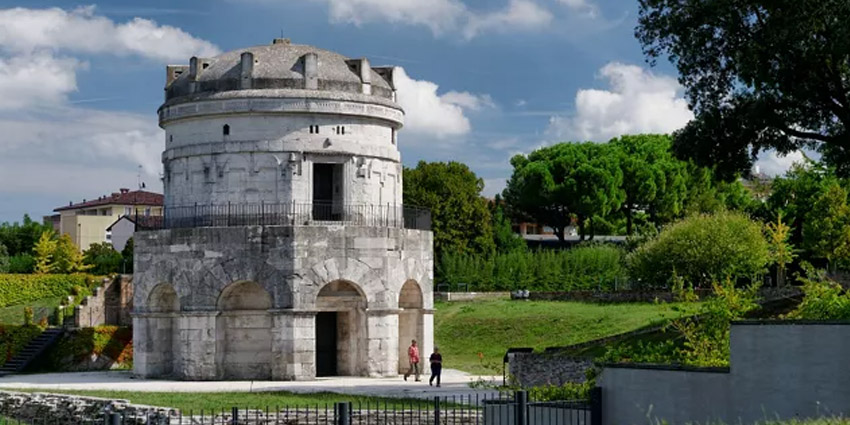
Ravenna
Cradle of ancient mosaics and capital of three empires, Ravenna is a gem of art and history in the heart of Emilia-Romagna. With its equipped beaches and UNESCO-listed monuments
In the heart of Emilia-Romagna, Ravenna enchants visitors with a perfect blend of art, culture, and nature. More than just a city of art, it’s an ideal destination for sea lovers and adventure seekers alike: over 35 kilometers of well-equipped Adriatic coastline offer pristine beaches, sports activities, nature excursions, and thrilling theme parks—all just minutes from the city center.
But Ravenna truly shines through its rich historical and artistic heritage. A true treasure trove shaped by a glorious past, the city played a starring role in European history. Beginning in the 5th century AD, Ravenna was three times the capital—first of the Western Roman Empire, then the Kingdom of the Ostrogoths, and finally the Byzantine Empire. Thanks to these golden eras, Ravenna today boasts eight UNESCO World Heritage monuments.
Ravenna’s prestige has never faded. Under the rule of the Da Polenta family, who governed from 1275, the city flourished once more, expanding and undergoing major land reclamation works. It was during this period that Dante Alighieri spent his final years here. Later, Ravenna became the site of a bloody battle in 1512 and eventually joined the Kingdom of Italy in 1860.
Today, Ravenna continues to captivate visitors with a cultural itinerary unlike any other. The Basilica of San Vitale, a masterpiece of Early Christian and Byzantine art, is world-renowned for its stunning mosaics depicting the grandeur of Emperor Justinian’s reign. Just steps away stands the Mausoleum of Galla Placidia: modest on the outside but hiding a breathtaking interior, adorned with Ravenna’s oldest Byzantine-inspired mosaics.
Another must-see is the Basilica of Sant’Apollinare Nuovo, originally built by the Ostrogoth king Theodoric for Arian worship and later consecrated for Catholic use during Justinian’s rule. Inside, you’ll find the largest known mosaic cycle in existence. Just outside the city, the Basilica of Sant’Apollinare in Classe houses the remains of the city’s patron saint and stands as the finest example of a paleochristian basilica in the world.
Don’t miss the Mausoleum of Theodoric either, with its distinctive decagonal shape and massive monolithic dome—one of the most significant Ostrogothic burial structures in Italy. And for a truly awe-inspiring experience, visit the Baptistery of Neon, one of Ravenna’s oldest and best-preserved buildings, as well as the Arian Baptistery, the only remaining baptistery dedicated to the Arian faith.
Ravenna is all this and more: a place where time stands still, and where the beauty of mosaics tells centuries of faith, power, and art. A journey through history that speaks to both the eyes and the heart.




